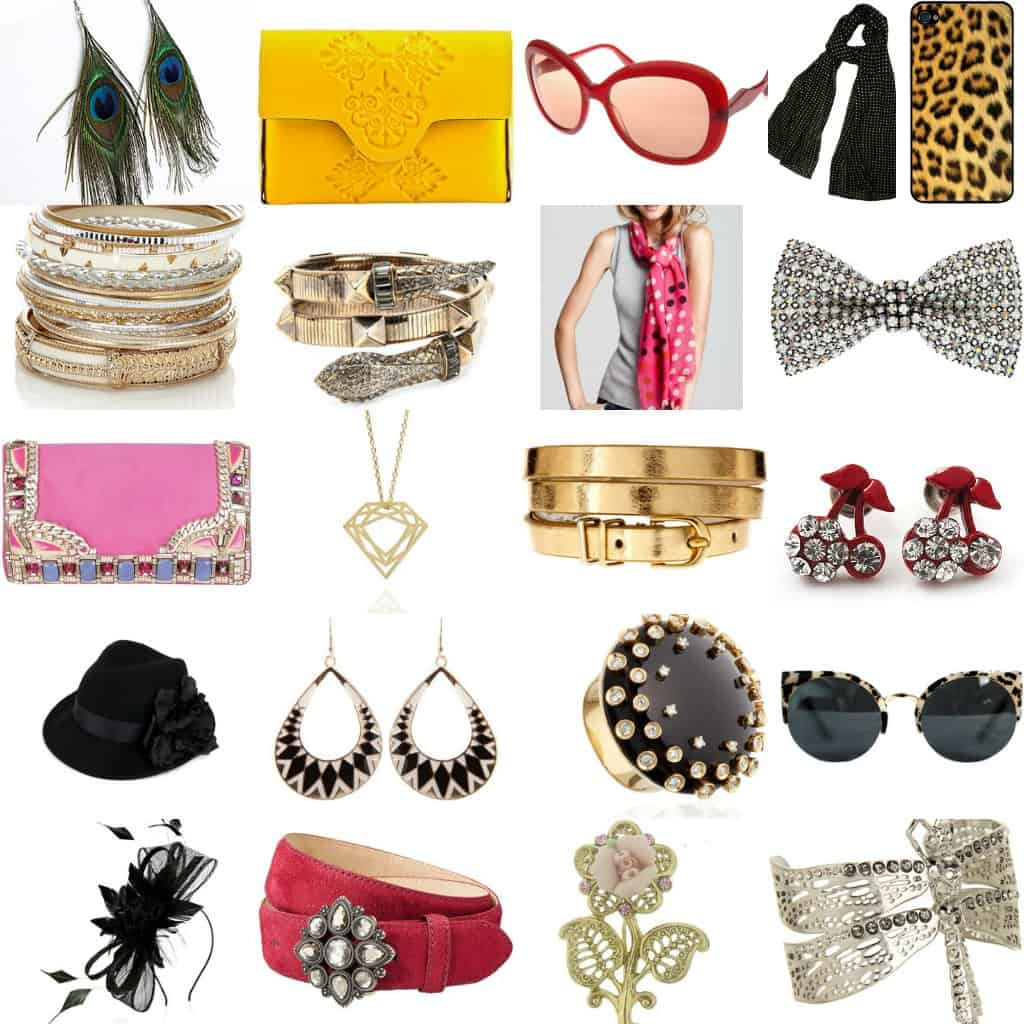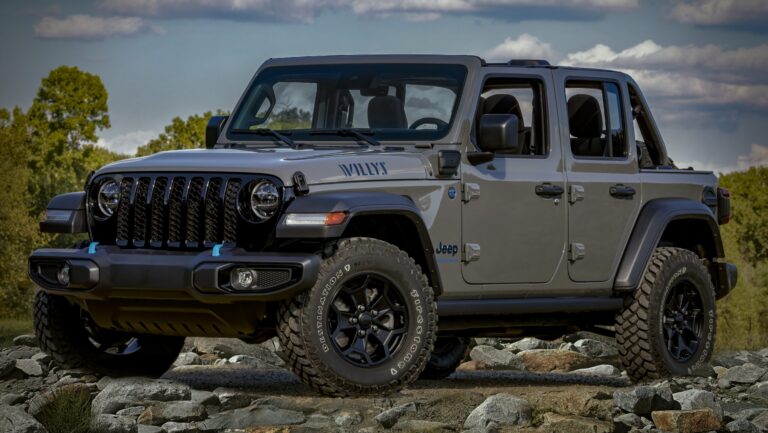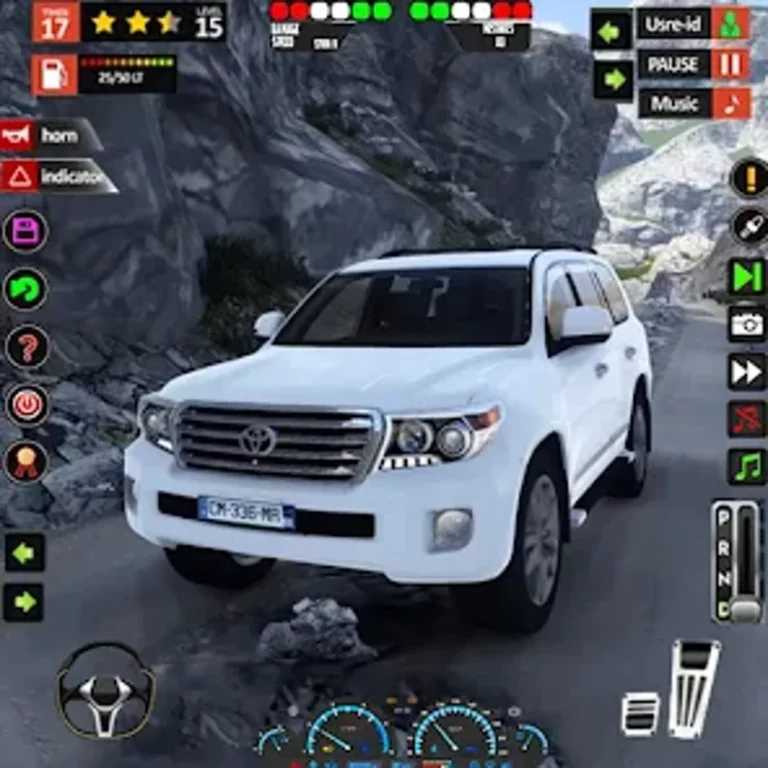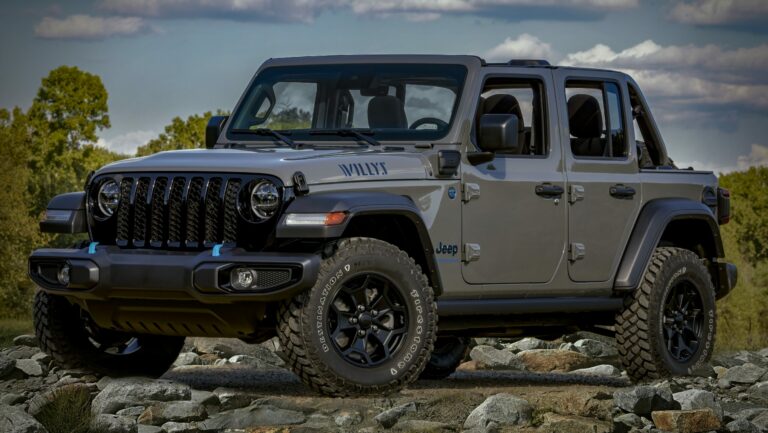Accessories For A 2000 Jeep Wrangler: Customizing Your TJ Legend
Accessories For A 2000 Jeep Wrangler: Customizing Your TJ Legend jeeps.truckstrend.com
The 2000 Jeep Wrangler, part of the beloved TJ generation (1997-2006), stands as a testament to classic Jeep design, off-road prowess, and an enduring spirit of adventure. More than just a vehicle, a TJ Wrangler is a canvas for personalization, a machine begging to be tailored to its owner’s specific needs and aspirations. "Accessories For A 2000 Jeep Wrangler" isn’t just about adding parts; it’s about unlocking its full potential, enhancing its capabilities, improving comfort, and making it uniquely yours.
From conquering challenging trails to cruising city streets with an undeniable presence, the right accessories can transform your 2000 TJ from a capable stock vehicle into a bespoke off-road warrior, a comfortable daily driver, or anything in between. The aftermarket for TJ Wranglers is vast and vibrant, offering an almost endless array of options to boost performance, protection, utility, and aesthetics. This comprehensive guide will delve into the essential categories of accessories, providing practical advice and insights to help you navigate the exciting world of customizing your iconic 2000 Jeep Wrangler.
Accessories For A 2000 Jeep Wrangler: Customizing Your TJ Legend
Enhancing Off-Road Capability & Performance
For many 2000 TJ owners, the primary goal of accessorizing is to bolster their vehicle’s off-road prowess. These upgrades directly impact your Wrangler’s ability to tackle rough terrain, navigate obstacles, and provide a safer, more exhilarating experience.
1. Lift Kits:
Perhaps the most iconic Jeep modification, a lift kit increases ground clearance, allowing for larger tires and improving articulation.
- Types:
- Budget Boost/Spacer Lifts: Inexpensive, typically 1-2 inches, using coil spacers to lift the body. Good for a mild lift and larger tires without major suspension changes.
- Suspension Lift Kits: Replace springs, shocks, and sometimes control arms, providing 2-4 inches or more. Offer improved ride quality and articulation over stock.
- Long Arm Kits: For serious off-roaders, these replace short control arms with longer ones, improving suspension geometry for extreme articulation and better highway manners with taller lifts.

- Benefits: Increased ground clearance, ability to fit larger tires, improved approach/departure/breakover angles.
- Considerations: Higher center of gravity, potential for driveline vibrations (especially with lifts over 2.5-3 inches requiring a Slip Yoke Eliminator (SYE) kit and CV driveshaft), impact on steering geometry (requiring adjustable track bars, extended sway bar links). Installation can be complex.

2. Tires & Wheels:
Larger, more aggressive tires are fundamental for off-roading, providing better traction and flotation.
- Tire Types:

- All-Terrain (A/T): Good balance for on-road comfort and off-road grip.
- Mud-Terrain (M/T): Aggressive tread for maximum traction in mud, rocks, and loose terrain; louder on pavement.
- Wheels: Aftermarket wheels often have different backspacing, pushing the wheels out to accommodate wider tires and improve stability. Steel wheels are durable and often more affordable, while alloy wheels are lighter and offer more aesthetic options.
- Benefits: Superior traction, improved ground clearance (via larger diameter tires), enhanced aesthetics.
- Challenges: Larger tires can affect speedometer accuracy, fuel economy, and require more braking power. Proper wheel backspacing is crucial to prevent rubbing.
3. Aftermarket Bumpers:
Stock bumpers are often flimsy. Aftermarket steel bumpers offer significant protection and utility.
- Front Bumpers: Available in various styles (stubby, mid-width, full-width) and can include winch mounts, D-ring recovery points, and integrated light tabs.
- Rear Bumpers: Often include a hitch receiver, D-ring mounts, and can incorporate a swing-out tire carrier for oversized spares that won’t fit on the tailgate.
- Benefits: Increased protection, recovery points, mounting solutions for winches and lights, improved approach/departure angles.
4. Winch Systems:
A winch is an indispensable recovery tool for serious off-roaders.
- Types: Electric winches are most common.
- Pulling Power: Match the winch’s capacity to at least 1.5 times your vehicle’s Gross Vehicle Weight Rating (GVWR). For a TJ, 8,000-10,000 lbs is typical.
- Rope: Steel cable (durable, heavy) or synthetic rope (lighter, safer, more flexible).
- Benefits: Self-recovery or assisting others out of stuck situations.
- Considerations: Requires a heavy-duty bumper, proper wiring, and training for safe operation.
5. Skid Plates & Underbody Armor:
Protect vital components from rocks and debris.
- Coverage: Engine, transmission, transfer case, fuel tank, differential covers.
- Material: Steel or aluminum.
- Benefits: Prevents costly damage to drivetrain and undercarriage components during off-road excursions.
Exterior Upgrades & Protection
Beyond performance, exterior accessories enhance your TJ’s functionality, protection, and iconic look.
1. Soft Tops & Hardtops:
Your top choice significantly impacts your TJ experience.
- Soft Tops: Offer the classic open-air Jeep feel. Replacements come in various materials (vinyl, premium sailcloth) and colors, with tinted window options. Easy to remove or fold back.
- Hardtops: Provide better insulation, security, and quieter ride. Can be heavy and require more effort to remove/install. Aftermarket options offer enhanced features like headliners and rear wipers.
- Benefits: Versatility for different weather conditions, enhanced security (hardtop), classic open-air experience (soft top).
2. Tube Doors & Half Doors:
For the ultimate open-air experience, these replace full doors.
- Tube Doors: Minimalist design, offering protection while maintaining an open feel. Primarily for off-road use; check local laws regarding mirror requirements.
- Half Doors: Provide a lower profile, often with soft or hard upper sections.
- Benefits: Unobstructed views, enhanced open-air feeling, lightweight.
- Considerations: Not suitable for all climates, may require relocation of mirrors, legal implications vary by state.
3. Fender Flares:
Essential for tire clearance and protecting your paint from debris.
- Types: Stock replacements, wider options for larger tires, or flat/high-clearance designs for maximum articulation and aggressive looks.
- Benefits: Tire coverage (often legally required for larger tires), increased tire clearance, enhanced off-road aesthetic.
4. Auxiliary Lighting:
Illuminate trails and enhance visibility.
- Types: LED light bars (roof-mounted, bumper-mounted), fog lights, auxiliary driving lights, rock lights.
- Benefits: Improved visibility off-road at night, increased safety, aesthetic appeal.
- Considerations: Check local laws regarding on-road use of off-road lights. Proper wiring and relays are crucial.
5. Rock Sliders & Side Steps:
A dual-purpose accessory.
- Rock Sliders: Frame-mounted steel bars that protect the rocker panels from impacts with rocks and obstacles.
- Side Steps: Primarily for easier entry and exit, especially for lifted TJs. Some combine rock slider protection with a step.
- Benefits: Critical protection for the body, easier access for passengers.
Interior Comfort, Storage & Technology
Accessorizing the interior improves daily usability, comfort, and organization.
1. Seat Covers:
Protect your seats from dirt, mud, spills, and sun damage.
- Materials: Neoprene (water-resistant, durable), canvas (rugged), ballistic nylon.
- Benefits: Preserve upholstery, add style, easy to clean.
2. All-Weather Floor Mats & Liners:
Jeep interiors are prone to getting dirty.
- Benefits: Protect carpet from mud, water, and spills; easy to remove and clean; custom-fit options available.
3. Interior Storage Solutions:
TJ interiors are compact, making smart storage essential.
- Options: Under-seat storage trays, overhead consoles, cargo nets, MOLLE panel systems for the tailgate or seat backs, locking center consoles.
- Benefits: Organize gear, secure valuables, maximize limited space.
4. Sound System Upgrades:
The stock TJ sound system is basic.
- Components: Aftermarket head units (with Bluetooth, Apple CarPlay/Android Auto), upgraded speakers (dash, soundbar), subwoofers (compact under-seat or cargo area models).
- Benefits: Improved audio quality, modern connectivity features.
5. Grab Handles:
Add sturdy grab handles to the roll bar for easier entry/exit and stability on rough trails.
Utility & Recovery Gear
Essential items for any Jeep owner, especially those venturing off-road.
1. Roof Racks & Cargo Carriers:
Expand your TJ’s carrying capacity.
- Types: Gutter-mounted (for hardtops), frame-mounted exterior racks (for soft or hardtops), hitch-mounted cargo carriers.
- Benefits: Transport camping gear, kayaks, bikes, extra fuel, or spare tires that don’t fit elsewhere.
- Considerations: Weight limits, impact on center of gravity.
2. Hi-Lift Jack & Mounts:
A versatile tool for lifting, winching, or clamping.
- Mounting: Hood mounts, bumper mounts, or interior mounts.
- Benefits: Essential for tire changes on lifted Jeeps, recovery, and various trail tasks.
- Safety: Requires proper training and extreme caution during use.
3. Recovery Straps, Shackles & Gloves:
Basic recovery kit essentials.
- Recovery Strap: Kinetic energy recovery rope or snatch strap for pulling a stuck vehicle.
- D-Ring Shackles: Connect recovery straps to bumpers or other recovery points.
- Gloves: Protect hands during recovery operations.
- Benefits: Safe and effective vehicle recovery.
4. Portable Air Compressor:
For airing down tires off-road (improves traction) and airing them back up for highway travel.
- Types: Portable 12V compressors or on-board air systems.
- Benefits: Optimal tire pressure for varying terrain, tire repair.
Important Considerations When Accessorizing Your 2000 TJ
Before diving into the world of modifications, keep these points in mind:
- Budgeting: Accessories can quickly add up. Prioritize what’s most important for your intended use.
- Installation Complexity: Some accessories are bolt-on DIY projects, while others (like lift kits, re-gearing) require specialized tools, knowledge, or professional installation. Factor in labor costs if you’re not doing it yourself.
- Legal Compliance: Be aware of local laws regarding lift heights, tire sizes, fender coverage, and auxiliary lighting.
- Impact on Ride Quality & Fuel Economy: Major modifications like large tires and heavy bumpers will affect your TJ’s on-road manners and reduce MPG.
- Resale Value: While some mods can increase value for enthusiasts, extreme or poorly installed modifications can deter potential buyers.
Practical Advice and Actionable Insights
- Define Your Goal: Are you building an extreme rock crawler, a comfortable overlander, or a stylish daily driver? Your purpose will dictate your accessory choices.
- Research Compatibility: Not all parts fit all TJs perfectly. Always verify compatibility with your specific year and model. Read reviews and forum discussions.
- Quality Over Price: While tempting, cheap accessories often mean poor quality, fitment issues, or premature failure. Invest in reputable brands, especially for critical components like winches, suspension, and recovery gear.
- Phased Approach: You don’t have to do everything at once. Start with essential upgrades and build gradually. A common progression is tires/wheels, then a mild lift, then bumpers/winch.
- Safety First: When installing or using accessories, always prioritize safety. Follow manufacturer instructions, use proper tools, and never exceed weight limits. Get training for recovery gear.
- Maintain Your Rig: Aftermarket parts can introduce new maintenance considerations. Regularly inspect all components, especially after off-road trips.
Conclusion
The 2000 Jeep Wrangler TJ is a timeless vehicle, celebrated for its rugged simplicity and unmatched potential for customization. Accessorizing your TJ isn’t just about bolting on parts; it’s about a journey of transformation, tailoring your vehicle to your adventurous spirit and unique needs. Whether you’re aiming for ultimate off-road prowess, enhanced comfort for daily driving, or a blend of both, the vast aftermarket offers an incredible array of options. By carefully planning, researching, and investing in quality components, you can elevate your 2000 TJ from a classic SUV to a true extension of your passion for exploration and freedom. Embrace the process, hit the trails, and enjoy the unparalleled experience of owning and customizing a Jeep Wrangler TJ – a true legend that only gets better with age and the right accessories.
Estimated Price Table for 2000 Jeep Wrangler Accessories
Disclaimer: Prices are highly variable based on brand, quality, material, features, and sales/promotions. These are rough estimates and should be used as a general guide only. Installation costs are not included.
| Accessory Category | Specific Item | Estimated Price Range (USD) | Notes |
|---|---|---|---|
| Performance & Off-Road | Suspension Lift Kit (2-4 inch) | $400 – $2,500+ | Coil spacers, spring/shock combo, or long-arm systems. |
| All-Terrain/Mud-Terrain Tires | $150 – $400 per tire | Size, brand, tread pattern significantly affect price. | |
| Aftermarket Wheels | $100 – $300 per wheel | Steel vs. alloy, design, finish. | |
| Front Bumper (Winch-Ready) | $300 – $1,000+ | Steel, stubby/full-width, D-ring mounts, light tabs. | |
| Rear Bumper with Tire Carrier | $400 – $1,200+ | Heavy-duty, swing-out carrier for oversized spares. | |
| Electric Winch (8,000-10,000 lbs) | $300 – $800+ | Synthetic rope generally costs more than steel cable. | |
| Skid Plates (Engine/Transfer Case) | $150 – $400 per plate | Material (steel/aluminum), coverage area. | |
| Exterior & Protection | Soft Top (Replacement) | $300 – $800+ | Standard vinyl, premium sailcloth, tinted windows. |
| Hardtop (Aftermarket) | $1,000 – $2,500+ | Often includes tinted windows, rear defroster, wiper. | |
| Tube Doors (Pair – Front) | $150 – $400 | Steel, powder-coated, often requires mirror relocation. | |
| Fender Flares (Aftermarket) | $100 – $500 | Stock-style, wider, or flat/high-clearance. | |
| LED Light Bar (20-30 inch) | $50 – $300 | Quality of LEDs, housing, beam pattern. | |
| Rock Sliders / Side Steps | $200 – $600+ | Frame-mounted for protection vs. bolt-on steps for accessibility. | |
| Interior & Comfort | Seat Covers (Full Set) | $50 – $300 | Neoprene, canvas, custom fit, brand. |
| All-Weather Floor Mats/Liners | $80 – $200 | Custom-fit, durable rubber or thermoplastic. | |
| Overhead Console / Storage | $50 – $200 | Lockable storage, often with speaker mounts. | |
| Aftermarket Head Unit (Stereo) | $100 – $500+ | Bluetooth, USB, Apple CarPlay/Android Auto. | |
| Utility & Recovery | Roof Rack (Soft Top/Hardtop) | $200 – $800+ | Gutter mount, hardtop mount, frame-mounted exterior racks. |
| Hi-Lift Jack (48" or 60") | $80 – $150 | Brand, model. | |
| Recovery Strap (30ft, 20,000 lbs) | $30 – $80 | Quality of webbing, breaking strength. | |
| D-Ring Shackles (Pair) | $20 – $50 | Material, working load limit. | |
| Portable Air Compressor | $50 – $250 | PSI output, duty cycle, portability. |
Frequently Asked Questions (FAQ) About 2000 Jeep Wrangler Accessories
Q1: What’s the first accessory I should buy for my 2000 TJ?
A1: This depends on your primary use. For daily driving and basic protection, all-weather floor mats, seat covers, and a quality sound system upgrade are great starts. If you plan to off-road, a good set of all-terrain tires and proper recovery gear (strap, shackles, air compressor) are essential first steps before considering major suspension modifications.
Q2: Do I need a professional to install a lift kit on my 2000 TJ?
A2: While some budget boost or simple spacer lifts can be installed by a mechanically inclined DIYer with proper tools and safety equipment, full suspension lift kits (especially 3 inches or more) involve complex suspension components, brake line extensions, and potentially driveline modifications (like a Slip Yoke Eliminator). Professional installation is highly recommended for these more complex kits to ensure safety, proper alignment, and optimal performance.
Q3: Will adding accessories affect my fuel economy?
A3: Yes, almost certainly. Larger, heavier tires, lift kits (which increase aerodynamic drag), heavy steel bumpers, winches, and roof racks all add weight and increase wind resistance, leading to a noticeable decrease in fuel economy. Re-gearing your axles to match larger tires can help recover some lost power and efficiency, especially off-road, but won’t fully negate the impact.
Q4: Are all accessories for a 2000 TJ street legal?
A4: No. Laws vary significantly by state and even by local municipality. Common areas of concern include:
- Lift Height: Many states have limits on maximum vehicle height or bumper height.
- Tire Coverage: Tires must often be fully covered by fender flares.
- Lighting: Off-road light bars are generally not street legal for on-road use and must be covered or switched off. Check local laws regarding auxiliary light placement and brightness.
- Doors: While popular, driving without full doors (or with tube/half doors) may have mirror requirements or other regulations in some areas. Always check your local Department of Motor Vehicles (DMV) regulations.
Q5: Where can I buy quality accessories for my 2000 TJ?
A5: Reputable online retailers specializing in Jeep parts (e.g., Quadratec, ExtremeTerrain, 4 Wheel Parts), local off-road shops, and even direct from manufacturers (e.g., Smittybilt, Warn, Bestop, TeraFlex, Rough Country). It’s always best to read reviews and research brands before purchasing.
Q6: How much lift can I put on my 2000 TJ without major modifications (like SYE/CV driveshaft)?
A6: Generally, a lift of 2.0 to 2.5 inches is considered the maximum before driveline vibrations become a significant issue, often necessitating a Slip Yoke Eliminator (SYE) kit and a CV (constant velocity) driveshaft. While some TJs might get away with a 3-inch lift without an SYE, it’s risky and often leads to premature U-joint wear and vibrations. For 3 inches or more, an SYE/CV setup is highly recommended for reliability and comfort.




